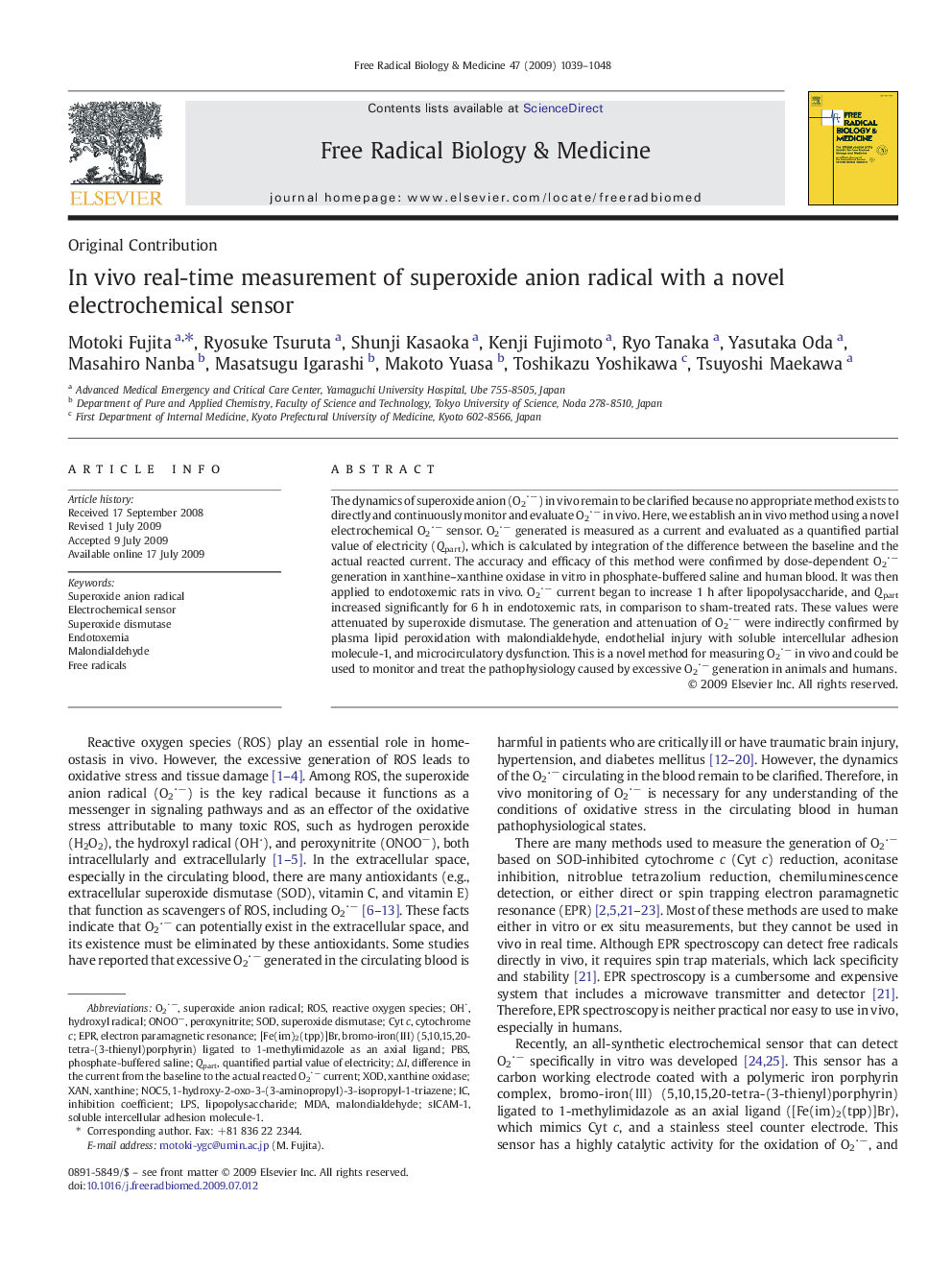| Article ID | Journal | Published Year | Pages | File Type |
|---|---|---|---|---|
| 1909794 | Free Radical Biology and Medicine | 2009 | 10 Pages |
The dynamics of superoxide anion (O2−) in vivo remain to be clarified because no appropriate method exists to directly and continuously monitor and evaluate O2− in vivo. Here, we establish an in vivo method using a novel electrochemical O2− sensor. O2− generated is measured as a current and evaluated as a quantified partial value of electricity (Qpart), which is calculated by integration of the difference between the baseline and the actual reacted current. The accuracy and efficacy of this method were confirmed by dose-dependent O2− generation in xanthine–xanthine oxidase in vitro in phosphate-buffered saline and human blood. It was then applied to endotoxemic rats in vivo. O2− current began to increase 1 h after lipopolysaccharide, and Qpart increased significantly for 6 h in endotoxemic rats, in comparison to sham-treated rats. These values were attenuated by superoxide dismutase. The generation and attenuation of O2− were indirectly confirmed by plasma lipid peroxidation with malondialdehyde, endothelial injury with soluble intercellular adhesion molecule-1, and microcirculatory dysfunction. This is a novel method for measuring O2− in vivo and could be used to monitor and treat the pathophysiology caused by excessive O2− generation in animals and humans.
